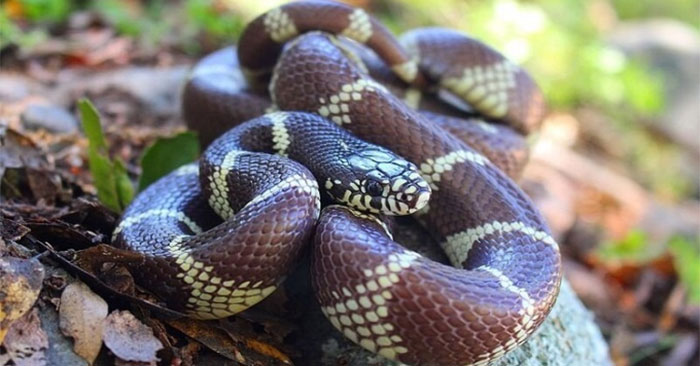The Spanish king snake has become a formidable predator of reptiles after being introduced to Gran Canaria in the Canary Islands.

The California king snake poses no threat to humans. Photo: Wikimedia
Experts from the Island Evolutionary and Ecological Research Organization at the Institute of Natural Products and Agricultural Biology in Spain have discovered an invasive snake species that has nearly wiped out all native reptile species on Gran Canaria. In a study published on December 6 in the journal Proceedings of the Royal Society B, Julien Piquet and Marta López-Darias compared environments affected by the introduction of the invasive snake to those without this species.
In 1998, the California king snake was introduced to Gran Canaria. Subsequently, some snakes escaped captivity or were released by their owners. Since then, these snakes have mated, reproduced, and taken over the island. In the new study, scientists investigated the impact of king snakes on the reptile populations on the island.
The California king snake is naturally found in the western United States and Mexico. They are non-venomous, colorful, and can grow up to 150 cm long. King snakes are typically active during the day, but they can switch to nocturnal activity in some cases when temperatures rise. Their diet includes birds, mice, amphibians, and reptiles. King snakes are harmless to humans, although they may bite occasionally. As popular pets, they are transported to many places around the world.
The research team noted that reptile populations on Gran Canaria, the third-largest island in the Canary Islands, are declining. To investigate whether this is related to the California king snake, they surveyed the number of reptiles on Gran Canaria and nearby islands that do not have invasive snakes. They found that the reptile population on Gran Canaria was over 90% lower, with skink populations down by 80% and gecko populations down by 50%. These findings highlight the significant impact that invasive snakes can have. The results of the study also underscore the importance of managing the introduction of invasive species, especially in sensitive ecosystems like islands.


















































